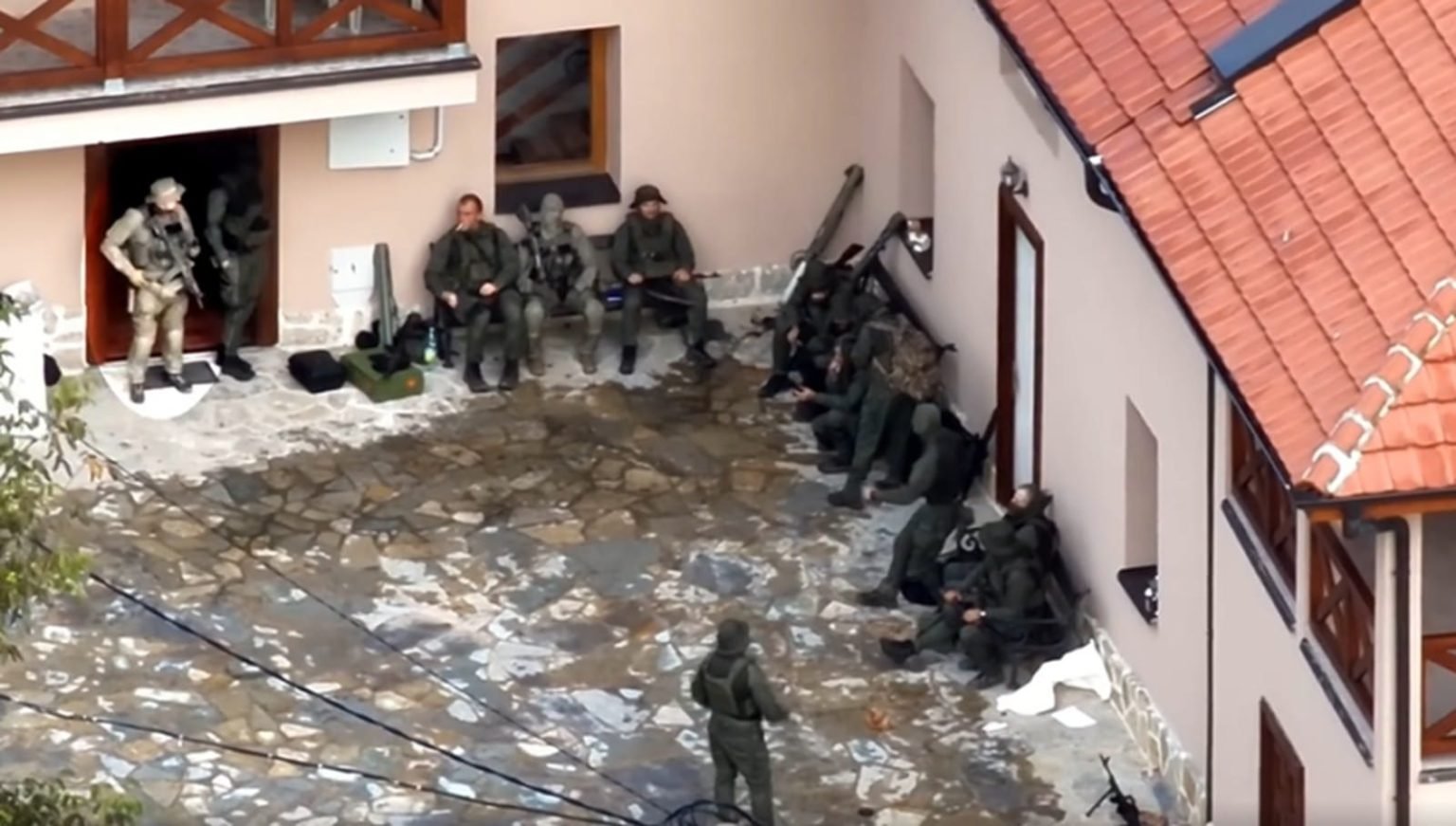Two years since the terrorist attack in Banjska, Zvečan
Author: Prof. Asoc. Dr. Arben Fetoshi- Director of Institute for Hybrid Warfare Studies “OCTOPUS”
Two years after the incursion in Banjska, Zvečan, framed as a terrorist attack against the constitutional order of Kosovo, the Balkans remain under the threat of Serbia’s chauvinist appetites and the revisionist axis led by Russia. The unchanged goal of sabotaging the Republic of Kosovo has only sharpened the insidious methods of manipulation and nationalist mobilization. After the failure of Radoičić and his paramilitaries, as a result of the effectiveness of Kosovo’s security institutions in coordination with allies, Serbia has continued its special war with sophisticated instruments such as disinformation, victimhood narratives, diplomatic deception, and its espionage network in Kosovo.
The American Blow
December 2021 marked a major turning point for northern Kosovo. Until then, criminal groups led by Milan Radoičić ruled freely and untouchably in that area of Kosovo. His criminal network operated as a “parallel state,” supported by Belgrade, shielded through positions in Kosovo’s institutions, and politically legitimized through the Serb List. But in December of that year came the first strike: The United States of America, through the Department of Treasury and Executive Order 13818 (the Global Magnitsky Act), imposed sanctions against Milan Radoičić, Zvonko Veselinović, and ten of their associates, as well as 24 companies and entities that formed the financial backbone of the network. With this decision, Radoičić, Veselinović, and their network were internationally exposed as actors of transnational crime and corruption, who could no longer continue unpunished. The decision was more than just a sanction—it was a silent directive to Kosovo not to allow the continued reign of crime in the north. Tolerating criminal gangs would have placed Kosovo on the international crime map and undermined its sovereignty. For this reason, the security institutions undertook concrete actions to dismantle these structures and extend the rule of law, proving that the network had no support among the Serbian citizens.
The Failure in Banjska
Faced with this situation, Serbia had few options. It attempted the scenario of controlled chaos to impose a security cordon (as in 1999), which at minimum would have led to the suspension of Kosovo’s institutions through KFOR’s intervention and the reactivation of UN Security Council Resolution 1244. The plan was to be led by Radoičić, who organized the armed attack with the aim of destabilizing the north by provoking a police response that would result in civilian casualties. However, due to the high capacities, efficiency, and coordination with allies, the scenario failed and the terrorist group was quickly neutralized. Serbia was politically exposed for its direct links and support of terrorist structures, while Kosovo, despite the great loss with the fall of Sergeant Afrim Bunjaku, emerged strategically stronger, winning the battle for sovereignty and territorial integrity. Nevertheless, the failure did not end Serbia’s chauvinist policy, due to new geopolitical circumstances as a result of Russia’s aggression in Ukraine and the “understanding” granted in the name of “stabilocracy.” Exploiting this momentum, Serbia shifted its war strategy into other forms, intensifying disinformation and propaganda campaigns, espionage operations, internal destabilization, and subversive efforts in the international arena.
The Same Goal with Other Methods
According to the Russian model of overthrow through lies (the “Firehose of Falsehood”), and by applying the strategy of victimhood, Serbia staged deceptive narratives of “Kosovo’s terror against Serbs,” “harassment of Serbian girls and women,” “threats to Serbian heritage”—all with the purpose of demonizing Kosovo’s institutions, stirring emotions, mobilizing Serbian citizens, and manipulating the Brussels process. In parallel, it used espionage and intelligence networks to distort the truth, targeting events, facts, politicians, journalists, and activists, with the aim of exerting psychological and political influence in Kosovo. Ethno-nationalist propaganda reached absurd levels, fabricating lies to bombard Serbian public opinion, fueling emotions and collective mobilization. In the same line, fabricated narratives about “Serbian heritage under threat” (churches, monasteries, and cultural monuments) persisted, despite the fact that these are protected by law and safeguarded by Kosovo’s security institutions. Such campaigns were part of a broader strategy to create a permanent climate of insecurity among citizens, in order to keep them politically bound to Serbia as their “sole guardian.” Through disinformation and other hybrid activities, Serbia aimed not only to preserve control over the north but also to avoid accountability before international justice, particularly concerning the issue of the missing persons from the war. By shifting the focus to “threats against Serbs,” it has continuously covered up its responsibility for this still-open wound of the war.
Meanwhile, Kosovo’s security institutions have also uncovered a wide espionage network of Serbia, which is not limited only to Kosovo but extends into structures of international institutions as well. By strengthening its ties ever more with Russia and China, Serbia has consistently manifested its strategic anti-Western orientation, serving an agenda that it sees as an opportunity for its “Serbian World” project.
Therefore, the second anniversary of the terrorist attack in Banjska should not serve as a commemoration of Serbia’s failed battle, but as a reflection on the threat it continues to represent. Its coordination with Russia constitutes the most serious threat to peace in Kosovo and in the region.

